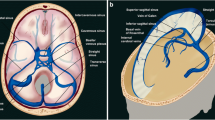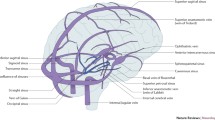Abstract
Cerebral cortical vein thrombosis (CCVT) is a rare type of cerebral venous thrombosis, which is frequently combined with cerebral venous sinus thrombosis (CVST). We aimed to compare the difference of clinical features between the isolated and the combined subtypes of CCVT. A literature search was conducted utilizing the PubMed Central and EMBASE databases to identify studies up to Dec 2019. Clinical manifestations, presumable risk factors, imaging modalities, radiological findings, treatment, and prognosis in patients with CCVT were recorded. 335 publications were identified (n = 325, 141 males and 184 females, mean age 40.24 ± 16.26 years). Headaches (46.8%), motor/sensory disorders (43.3%), and seizures (42.5%) were commonly seen. Pregnancy/postpartum (n = 29), oral contraception use (n = 15), fertility drug use (n = 4) ranked the top three comorbidities of CCVT in female patients, while for general populations, thrombophilia, invasive interventions in the cerebrospinal system, as well as malignancy, would be the common risk factors. MRV and DSA were more likely to confirm diagnosis. More than 30% of CCVT presented brain lesions, including infarction (6.5%) and hemorrhage (24.0%). Isolated CCVT was prone to develop hemorrhagic infarction while combined CCVT was more likely to have ischemic lesions. More than 90% of the patients acquired good outcomes at discharge or short-term follow-up (within one year). There is a difference between Isolated CCVT and CCVT combined CVST on the sites and types of brain lesions. MRV and DSA may contribute to the final diagnosis. Most patients acquired complete or partial recovery of clinical symptoms or imaging presentations after long-term anticoagulation (3–6 months).

Similar content being viewed by others
References
Coutinho JM, Gerritsma JJ, Zuurbier SM, Stam J (2014) Isolated cortical vein thrombosis: systematic review of case reports and case series. Stroke 45:1836–1838
Cohen JE, Duck M, Gomori JM, Itshayek E, Leker RR (2013) Isolated cortical vein thrombosis: a rare cause of venous stroke with good prognosis after timely diagnosis and treatment. Neurol Res 35:127–130
Ferro JM, Morgado C, Sousa R, Canhao P (2007) Interobserver agreement in the magnetic resonance location of cerebral vein and dural sinus thrombosis. Eur J Neurol 14:353–356
Linn J, Michl S, Katja B, Pfefferkorn T, Wiesmann M, Hartz S et al (2010) Cortical vein thrombosis: the diagnostic value of different imaging modalities. Neuroradiology 52:899–911
Sato T, Sakuta K, Komatsu T, Sakai K, Terasawa Y, Mitsumura H et al (2017) Yield of combined MRI sequences in isolated cortical vein thrombosis diagnosis. J Neurol Sci 381:328–330
Liu XY, Gabig TG, Bang NU (2000) Combined heterozygosity of factor v leiden and the g20210a prothrombin gene mutation in a patient with cerebral cortical vein thrombosis. Am J Hematol 64:226–228
Ahn TB, Roh JK (2003) A case of cortical vein thrombosis with the cord sign. Arch Neurol 60:1314–1316
Mickle JP, McLennan JE, Lidden CW (1977) Cortical vein thrombosis in wegener's granulomatosis. Case report. J Neurosurg 46:248–251
Derdeyn CP, Powers WJ (1998) Isolated cortical venous thrombosis and ulcerative colitis. Am J Neuroradiol 19:488–490
Zamboni P, Menegatti E, Weinstock-Guttman B, Dwyer MG, Schirda CV, Malagoni AM et al (2011) Hypoperfusion of brain parenchyma is associated with the severity of chronic cerebrospinal venous insufficiency in patients with multiple sclerosis: a cross-sectional preliminary report. BMC Med 9:22
Beggs C, Shepherd S, Zamboni P (2012) Cerebral venous outflow resistance and interpretation of cervical plethysmography data with respect to the diagnosis of chronic cerebrospinal venous insufficiency. Phlebology 29:191–199
Beggs CB (2013) Venous hemodynamics in neurological disorders: an analytical review with hydrodynamic analysis. BMC Med 11:142
Gao L, Xu W, Li T, Yu X, Cao S, Xu H et al (2018) Accuracy of magnetic resonance venography in diagnosing cerebral venous sinus thrombosis. Thromb Res 167:64–73
Ghoneim A, Straiton J, Pollard C, Macdonald K, Jampana R (2020) Imaging of cerebral venous thrombosis. Clin Radiol 75:254–264
Coutinho JM, Zuurbier SM, Stam J (2014) Declining mortality in cerebral venous thrombosis: a systematic review. Stroke 45:1338–1341
Choi PM, Ly JV, Srikanth V, Ma H, Chong W, Holt M et al (2012) Differentiating between hemorrhagic infarct and parenchymal intracerebral hemorrhage. Radiol Res Pract 2012:475497
Funding
This study was sponsored by the National Key R&D Program of China (2017YFC1308400), the National Natural Science Foundation (81371289), and the Project of Beijing Municipal Top Talent for Healthy Work of China (2014-2-015).
Author information
Authors and Affiliations
Contributions
MR: manuscript drafting and revision, and study concept and design. S-SY: manuscript drafting and revision, study concept and design, collection, assembly, and interpretation of the data. MR, S-SY, DL, WXQ: manuscript writing, and final approval of the manuscript.
Corresponding author
Ethics declarations
Conflict of interest
All authors report no conflicts of interest.
Additional information
Publisher's Note
Springer Nature remains neutral with regard to jurisdictional claims in published maps and institutional affiliations.
Rights and permissions
About this article
Cite this article
Song, Sy., Lan, D., Wu, Xq. et al. The clinical characteristic, diagnosis, treatment, and prognosis of cerebral cortical vein thrombosis: a systematic review of 325 cases. J Thromb Thrombolysis 51, 734–740 (2021). https://doi.org/10.1007/s11239-020-02229-x
Published:
Issue Date:
DOI: https://doi.org/10.1007/s11239-020-02229-x




